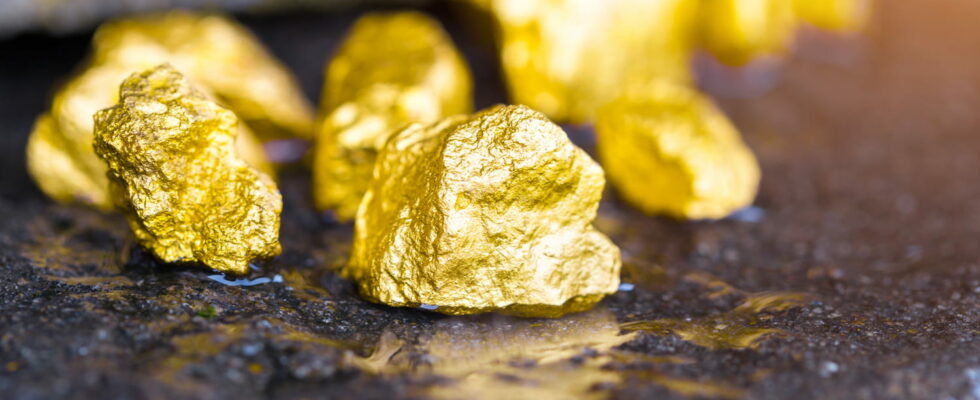As incredible as it seems, millions of tons of gold lie in places accessible to everyone, all over the world. However, their extraction poses numerous technical challenges.
Gold has fascinated humanity for millennia, symbolizing wealth and power. While most treasures lie dormant in the heart of mountains or in the sands of rivers, an unsuspected secret lies beneath the surface of the oceans. It was while exploring these depths that scientists made an incredible discovery: the oceans are home to the largest natural reserve of gold ever identified. And this treasure is accessible, in theory, to everyone.
According to NASA estimates, nearly 20 million tons of gold are dissolved in sea water. To fully understand the importance of this formidable reserve, you should know that no one has collected, in any human history, only around 200,000 tonnes of the precious yellow metal, or 100 times less! And if we melted all this gold in a single block, it would only form a cube with a side of 22 m…. In fact, the largest reserve of gold on the planet is nestled in the very heart of the earth’s core: it amounts to some 2 million billion tonnes according to calculations by Australian geologist Bernard Wood.
Although the gold contained in the oceans appears impossible to harvest, the information has piqued the interest of researchers and entrepreneurs. Concentrations of gold in seawater are minimal, but distributed over an immense mass. The idea of exploiting this wealth is therefore tempting, but the technological challenges are considerable. Until now, extracting these metals profitably has been a challenge. The available techniques, although sophisticated, do not yet make it possible to extract dissolved gold at a reasonable cost.
That’s not all. The ocean floor is also full of other, much more accessible riches. In some underwater regions, particularly near ocean ridges, deposits of precious metals such as gold, copper and silver are concentrated in hydrothermal sulfide deposits. These structures, called “black smokers”, release minerals from deep within the Earth. Exploration of these areas has already begun, and mining companies are trying to lay the foundations for industrial exploitation there. In 2017, Papua New Guinea even issued the world’s first underwater mining permit, paving the way for what could well be the new gold rush.
However, this quest is not without danger. Marine ecosystems, still largely unknown, are extremely vulnerable. Experts fear that underwater mining, by disrupting local ecosystems, could cause irreversible damage. Rare invertebrate species rely on the unique chemistry of “black smokers,” and scientists struggle to assess the consequences of such activity. Each year of extraction could destroy hundreds of square kilometers of marine habitats, disrupting complex food chains.
The question of whether the exploitation of these resources is sustainable therefore remains open. Although the economic potential is immense, the environmental impact could be just as significant. Before diving headlong into this new industrial adventure, a reflection is necessary on the limits to be set to protect these ecosystems. The greatest treasure of our blue planet is perhaps the one that we have not yet learned to preserve.
